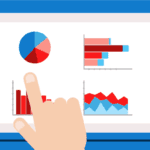The process of converting data from one structural form to another to meet the requirements of the system to which it is migrated is known as data conversion. This is usually the result of introducing a new system or location for the data.
This step allows the data to be read, changed, and executed in a different application or database than the one in which it was created.
Conversions of data can be as simple as converting a text file from one character encoding system to another, or as complex as converting office file, image, and audio file formats.
In this post, we will go over some critical factors to consider during the different phases of the data conversion process.
1. Understand the purpose of your plan
The strategy, preparation, and specifications for converting data from the source system to the target system or within an existing system are described in this Data Conversion Plan. This plan describes the overall approach, assumptions, and data conversion processes that will be used.
Understanding the Data Conversion Plan’s purpose will assist you in identifying information for the automated system, application, or situation to which the Data Conversion Plan applies.
To begin, you must understand the Data Conversion Plan’s objectives and describe any assumptions or dependencies regarding the data conversion effort. Such as issues with software or hardware, operating systems, end-user characteristics, and/or data that must be available for conversion.
Once you understand your dependencies, you can identify any constraints that must be considered before data conversion from the old to the new product or IT system.
Finally, describe any risks associated with data conversion and proposed mitigation strategies as part of understanding the purpose of your conversion plan. This includes any risks that may have an impact on conversion feasibility, technical performance, and other factors.
2. Develop a data conversion strategy
The data conversion strategy, like any new project/system implementation, is a critical step that lays out the principles and guidelines for the data conversion process.
Begin by providing a general description of the data conversion effort’s along with the rationale for the conversion.
Then, during the conversion/migration process, describe the approach that will be used to extract, transform/cleanse, and load data from the source to the target destinations.
In addition, you must provide a schedule of conversion activities to be completed per this
data conversion plan.
Finally, as part of the conversion strategy, identify the different types of data quality issues that may arise and describe the strategy to be used to ensure data quality before and after all data conversions.
3. Start your data transformation preparation
You must describe all preparatory and/or initiation processes that must be completed before data conversion in this step. Describe the characteristics of machine-readable media, for example, if the data will be transported using that medium. Determine whether any support materials are required for the conversion process.
Also, describe how the baselines for the source and target data will be created and managed before any manipulation or migration.
Furthermore, describe the process for restoring the source data if the need to revert to a previous backup is discovered at any point during the conversion process.
4. Finalize the data conversion specifications
For finalizing the data conversion specifications, provide a cross-reference between the input data and the resultant output data. Determine whether any of the data are derived from other data. Also, provide transformation/cleansing rules for each data element, as well as any other considerations.
Final words
The need for data conversion is at an all-time high right now, as the accessibility, quality, and diversity of information available to a company’s customers become increasingly important. And successful data conversion implementation is the result of careful planning and preparation.
Regardless of how the data conversion is carried out, it is critical to understand that information can be easily discarded during the process and, if lost, is difficult or impossible to recover.
As a result, when converting from one data type to another, make sure to evaluate and comprehend how data will be impacted.
If you still face challenges during the data conversion process or find it too time-consuming you can always outsource your data conversion services to a renowned service provider.









